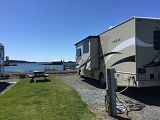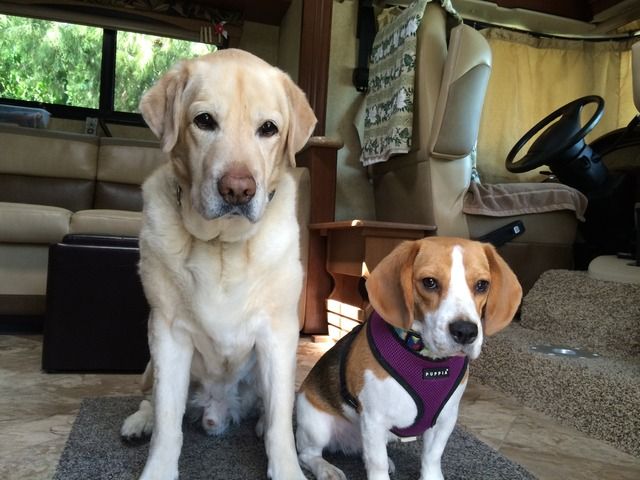This is a really interesting thread!
Thanks, ladies!
Another thought, since you are familiar with camping in a mini-van, is to just go with a full-size cargo van. That's what I did. Link to my DIY van conversion, below.
I am I guess what one might call a "minimalist" when it comes to the RV route. Thought I would state that up front. Why? Because one of the reasons for exploring RV options, is that I love to visit volcanoes. There are literally hundreds of them, major, minor, extinct, dormant and active - in the Cascade mountain range, that runs from Northern California to British Columbia.
Now, volcanoes tend to be away from populated areas (but not always - if you want to curl your hair, do a Google Earth of Mt. Vesuvius in Italy. The surrounding towns meander up it's slopes. And Vesuvius is an active volcano), so when I went to visit a volcano, I wanted to have someplace to "stay". There are often campgrounds fairly near to volcanoes (Medicine Lake Volcano in Northern California has a nice campground on it's northeast shoulder). To drive around the (mostly) unpaved roads surrounding the Cascade volcanoes would be difficult, if not impossible, with a MH or a TT.
When I was trying to make up my mind, I was asking myself all of the questions that you are asking (good ones, too!) about the pros and cons of MH/TT.
I was also reading this forum, like you are, and (at the time, a few years back) there were a lot of posts from various forum sisters who had purchased an older MH or TT. All had stories to tell about their "money pit". Expensive to purchase, expensive to maintain, expensive to drive, REALLY expensive to repair - and, at the time, these sisters were repairing their MH or TT
A LOT.I worried about a breakdown somewhere out in the back of beyond when traveling by myself.
This got me going down the van road.
Another reason
COST: I decided I wanted to purchase new, which I did (a brand-new cargo van can be had at a fraction of the price of even a well-used MH). I purchased it in October 2012, it was a new 2011 still lingering on the lot, and the dealer wanted it $gone$. $$$ASAP$$$ I was happy to oblige, with nearly 1/3 knocked off the original sticker price.
New, to me, means no immediate mechanical worries, and probably not until far in the future - because I will know the history of it's problems and it's maintenance - and I maintain this van
well (an aside - a cargo van does not require nearly as frequent oil changes and such as does a car - How do I know? It is stated in the van's owner's manual).
It doesn't require to be $"stored"$ somewhere, when not in use - I just park it in my home's driveway. It looks like a cargo van, so few realize it is a camper.
I jump in it every few weeks to take it for groceries or a quick trip to the mountains. It is there, in my driveway, ready to go at any time. Plus, it is not so good to leave a TT or MH "just parked" for extended periods of time.
One the road, it gets around 20 mpg, it is easy to drive (a bit more attention needed than a car - mainly because my van doesn't have side windows - but not that much).
Easy to drive (high off the ground, lots of visibility - like a pickup - it is a 3/4 ton chassis), easy to park (will fit in any standard parking stall) easy to back up, relatively inexpensive to maintain, has towing capacity of 9000# (should I ever decide to tow - not too likely at this point) on the road or off. Just your basic oil changes, and a set of new tires thus far.
I have not been able to travel with it as much as I had hoped (more travel coming soon!) so it currently has 21,000 +/- worry-free miles on the odometer.
As a minimalist, my converted cargo van (link below) works really well for me. As a minimalist, I wanted to be more "stealthy", so did not want to put any holes in the body work. I just run a heavy duty, industrial type (this is
important - your usual Home Depot extension cord will not do the job running a heater or A/C) through a partially rolled-down front window. Yes, even in the wintertime. Yes, even when it is raining - I roll down the window, put the extension cord where it needs to be, roll the window back up to where it is just open a crack (to accomodate the extension cord) then put a large, clear plastic bag (that I carry just for this purpose) over the entire door, then shut the door on the plastic bag. Keeps the rain out!
1. With a cargo van, when I get there, I am "there". Turn off the ignition, plug in, and I am done. No backing up, unhooking, chocking tires, leveling, set-up, fussing around. Nada.
2. For refrigeration, I have a 2-way Dometic refrigerator/freezer (12 volt DC/110 AC) - it will run off my cigarette lighter or off an AC outlet -one can either set it as a refrigerator or as a freezer, but not both at the same time. It looks like, and is the size of a large-ish ice chest. I also have a Coleman ice chest that I have modified by adding about 1" of styrofoam-panel insulation, top, bottom, sides. With the extra insulation the ice chest keeps my "ice blocks" frozen for at least 5 days (in hot weather). I have about 1/2 dozen of the extra-large "ice blocks", some kind of goo sealed in hard plastic that freezes. I start out with freezing solid all of these in my home freezer before I hit the road. At the start of my trip, I put half in the Dometic (set to "freezer") and half in the ice chest. If I stop for several days, again, even in hot weather, the ice chest stays cold for at least 5 days. When I get back on the road, I swap the cold ones from the Dometic with those in the ice chest, and the Dometic will re-freeze them as I drive down the road. Or, if I have plug-ins, I just plug in the Dometic.
3. For A/C (the Cascades can be HOT in the summertime - I stayed at the Medicine Lake Volcano in September, and the outside temp was 105) I have a small, house type A/C unit installed behind the side door of my van. When the A/C is running I leave the door open, so the unit can exhaust the heat to the outside. A/C is a necessity, not only for me but because I travel with my Staffordshire Bull Terrier. Overheated dogs tend to die. This is a bit difficult to explain, check out my van link below for photos.
4. But I do also travel when it is cold. For heat, I have a DeLonghi oil-filled "bathroom" heater:
https://www.amazon.com/DeLonghi-TRN0812T-Portable-Oil-Filled-Programmable/dp/B000G1CXZII chose this for several reasons: it is small, rather squat compared to other oil-filled heaters, it never gets really hot (thus low fire danger) - when it is full on, one can still put one's hand on it and not get burned. The specs say nothing within 3' to the front of it and nothing 3' above it, and keep things away from the sides. Perfect for a van. It won't heat up the inside of the van instantly, but it does a fine job of keeping the van warm (the insulation I installed in the van walls helps quite a bit on this too). I found out how well it works when camping a few years ago in January. When I woke up in the morning, I was a bit too warm - checking the inside thermometer it read a toasty seventy degrees (F). Then I went outside to check the second thermometer I had left on the campground table. I was (to say the least) astonished to see that this outside thermometer read a frosty thirteen degrees (F)!
5. For potty, I have a nice top-of-the-line Thetford porta potty (originally recommended by ladies on this forum), for emergencies and sudden middle-of-the-nighters. It is easy to use, and easy to dump and to clean. Don't use it all the time, but it is nice to have it there when I need it.
6. For bathing, I either use campground showers or "solar bag" showers when out in the boonies:
https://www.amazon.com/Coleman-2000014865-5-Gallon-Solar-Shower/dp/B0009PUT20/ref=sr_1_cc_1?s=aps&ie=UTF8&qid=1484415167&sr=1-1-catcorr&keywords=Coleman+solar+showerThis can work well for solar showers, or hot water for dishes. Or, with the hot water, I just take a "sponge bath" inside my van.
7. For cooking, I use your basic Coleman propane stove:
https://www.amazon.com/Coleman-2000020953NP-Triton-Propane-Stove/dp/B00VTJGWNU/ref=sr_1_2?s=sporting-goods&ie=UTF8&qid=1484415340&sr=1-2&keywords=Coleman+stoveThe only downside is that I can't stand up in it - I can walk around inside, but have to move bent over.
Overall, the good far outweighs the bad.
Questions or comments? Please ask. Happy to oblige.
Thanks.
Anne










